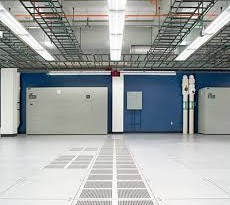Data Center Power Control
With the spread of cloud computing, the scale of the market for data centers is growing, as is the amount of energy consumed by these data centers. As a result of this, improving the energy efficiency of data centers is a major challenge. Modern data centers require a space-saving and robust power distribution system that can be easily expanded and support high plug requirements. To sustainably run a data center, it is crucial to understand the power consumption. Along with the high availability requirements, it is important to know where and how much energy is used.
Determining the power requirements is an important aspect of data center planning and design. This can be a difficult number to estimate if the data center is not monitored separately. Some of the important avenues in data center planning and design are to:
- Estimate existing server power load requirements.
- Estimate future server power load requirements.
- Estimate other equipment’s power load requirements.
- Estimate the total power requirements for the data center.
- Estimate the size of generator needed.
Power management involves power capping which is an effective measure for power control. The fundamental goal of reducing power consumption per workload unit has been the point of interest, with innovations occurring at multiple points within the data center as well as within the computer systems themselves.
Power capping is the capability to limit the power intake of a system, be it a blade server or a rack server, to some threshold that is less than or equal to the maximum rated power of the system. This feature provides excellent benefits to data center management. It helps ensure that power is not drawn beyond the prescribed level though it does not take into account that the various blades may have varying loads. At any given time, one blade may not be using its full allotment of power while another may require more.
Dynamic power capping is another type, which allows the power management system to distribute the total pool of power across multiple blades in a chassis. With this, the system as a whole can conform to a precise power budget, but power can be steered to the blades that have higher load and require additional power. Till date, dynamic power capping has been limited just to a single blade chassis. It is more useful to operations management than the other traditional alternatives if implemented across multiple blade chassis.
By adding power capping technology to the management infrastructure, data centers can provision power based on the usage rather than on theoretical server maximums or power supply capabilities. In addition, by using priorities within the service profile, data centers can direct power to the most important workloads in environments where power is constrained.
The three major variables that affect the optimization of power usage are:
• Cooling and distribution system efficiency: The cost of cooling the system is a sizable fraction of the cost of the energy used to perform the workload.
• Efficiency: The key parameter which the server design can alter is the processing efficiency per watt. This parameter is mostly influenced by two factors: how efficiently a single server node can perform as measured by a variety of standard benchmarks, and the overhead of any shared infrastructure such as the fans and power supplies in a blade chassis.
• Capacity utilization: Utilization is where power capping comes into picture, since the capability of intelligent allotment of power across a collection of servers increases the overall efficiency by reducing the amount of over provisioning from power distribution equipment.
In order to respond to the increasing need for data centers, the industry has seen growth in the commercialization of container data centers. Conventional large-scale data centers have also been part of the commercialization process. The amount of power consumed by a container data center depends on the power requirements of the container’s A/C equipment, servers and other IT devices. Recent advancements have been made in the efficiency of power of A/C equipment with the use of external ambient air and other methods. Moreover, the internal fans used to cool servers consume large power, which accounts for a large percentage of overall electricity consumed by container data centers. To further reduce power consumption, container data centers are adopting servers without the internal fans as, enhancement in the efficiency is seen by cooling through the use of efficient, large-scale container A/C fans.
The overall power consumption of container data centers can be effectively reduced by cutting the electricity usage of A/C equipment through external ambient air and other measures. At the same time, IT equipment power consumption can be cut by employing servers that lack internal fans. In the conventional approach to A/C management, A/C systems and servers inside the containers are controlled independently, thereby making it difficult to efficiently cool fan-less servers.
Data Center Talk updates its resources every day. Visit us to know of the latest technology and standards from the data center world.
Please leave your views and comments on DCT Forum

